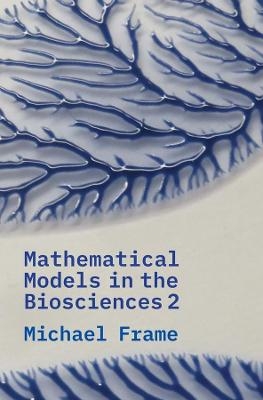
Mathematical Models in the Biosciences II
Seiten
2021
Yale University Press (Verlag)
978-0-300-25369-6 (ISBN)
Yale University Press (Verlag)
978-0-300-25369-6 (ISBN)
Volume Two of an award-winning professor’s introduction to essential concepts of calculus and mathematical modeling for students in the biosciences
Volume Two of an award-winning professor's introduction to essential concepts of calculus and mathematical modeling for students in the biosciences
This is the second of a two-part series exploring essential concepts of calculus in the context of biological systems. Building on the essential ideas and theories of basic calculus taught in Mathematical Models in the Biosciences I, this book focuses on epidemiological models, mathematical foundations of virus and antiviral dynamics, ion channel models and cardiac arrhythmias, vector calculus and applications, and evolutionary models of disease. It also develops differential equations and stochastic models of many biomedical processes, as well as virus dynamics, the Clancy-Rudy model to determine the genetic basis of cardiac arrhythmias, and a sketch of some systems biology. Based on the author’s calculus class at Yale, the book makes concepts of calculus less abstract and more relatable for science majors and premedical students.
Volume Two of an award-winning professor's introduction to essential concepts of calculus and mathematical modeling for students in the biosciences
This is the second of a two-part series exploring essential concepts of calculus in the context of biological systems. Building on the essential ideas and theories of basic calculus taught in Mathematical Models in the Biosciences I, this book focuses on epidemiological models, mathematical foundations of virus and antiviral dynamics, ion channel models and cardiac arrhythmias, vector calculus and applications, and evolutionary models of disease. It also develops differential equations and stochastic models of many biomedical processes, as well as virus dynamics, the Clancy-Rudy model to determine the genetic basis of cardiac arrhythmias, and a sketch of some systems biology. Based on the author’s calculus class at Yale, the book makes concepts of calculus less abstract and more relatable for science majors and premedical students.
Michael Frame retired in 2016 as adjunct professor of mathematics at Yale University. For more than twenty years Frame taught courses on fractal geometry and calculus based on applications in biology and medicine. Amelia Urry and he are the coauthors of Fractal Worlds: Grown, Built, and Imagined.
| Erscheinungsdatum | 04.11.2021 |
|---|---|
| Zusatzinfo | 250 b-w illus. |
| Sprache | englisch |
| Maße | 156 x 235 mm |
| Themenwelt | Mathematik / Informatik ► Mathematik ► Analysis |
| Naturwissenschaften ► Biologie | |
| ISBN-10 | 0-300-25369-9 / 0300253699 |
| ISBN-13 | 978-0-300-25369-6 / 9780300253696 |
| Zustand | Neuware |
| Haben Sie eine Frage zum Produkt? |
Mehr entdecken
aus dem Bereich
aus dem Bereich
Band 5: Hydraulik, Stromfadentheorie, Wellentheorie, Gasdynamik
Buch | Softcover (2024)
De Gruyter Oldenbourg (Verlag)
CHF 83,90


